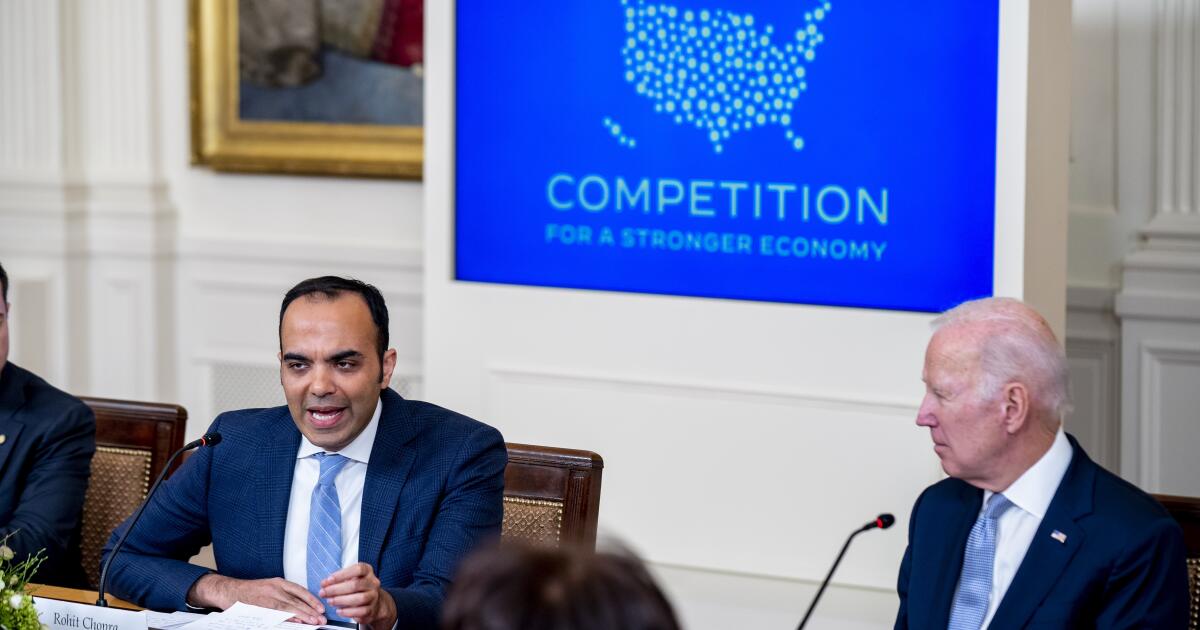Alaska Airlines to cancel all Boeing 737 Max 9 flights through Saturday
In a statement, Alaska said it hoped the announcement of cancellations ahead of time “provides guests with a little more certainty, and we are working around-the-clock to reaccommodate impacted guests on other flights.”
The moves mean the impact of the grounding will stretch into a second week. That spells misery for thousands of passengers and a particular headache for Alaska, which depends heavily on its 65 new Max 9 jets and must scramble to rework its operations.
The delay has been exacerbated by a lack of clarity from Boeing and the FAA about when they would be ready to sign off on the final inspection procedure. While airlines have been conducting their own inspections, the FAA has a formal procedure required for the aircraft to be cleared to fly again. The guidelines for those inspections have not yet been agreed upon.
No matter what, the pace at which the planes could be ungrounded will be determined by safety alone, Transportation Secretary Pete Buttigieg said Wednesday.
“All I am going to say is that the consideration for the timeline is safety,” he said on the sidelines of a transportation conference in D.C. “That’s going to dictate everything.”
Between them, Alaska and United have canceled about 1,800 flights since the Max 9 was grounded Saturday. Alaska has already canceled 149 flights for Thursday, while United has scrapped 154, although some are probably unrelated to the grounding.
Without the jets, the carriers are left trying to rethink their schedules, aviation analyst Henry Harteveldt said, likening the process to a combination of Tetris, Jenga and chess.
“Airlines are rightfully becoming concerned about Boeing and the FAA reaching agreement on the inspection process and guidelines and everything that’s needed so they can do the work that they need do and get these airplanes back in service,” Harteveldt added.
United has 79 Max 9s in its fleet, but it is far larger than Alaska, giving it more options to respond to the grounding. The carrier said it had avoided 45 cancellations Wednesday by shifting flights to other aircraft types. But the Max 9 amounts to about a quarter of the fleet at Alaska, which has had to cancel about a fifth of its flights since Saturday.
The grounding order was issued after an Alaska flight was forced to make an emergency landing in Portland, Ore., on Friday after a door plug — an exit that’s paneled off rather than used as a door — blew out, leaving the plane with a gaping hole and forcing passengers to wear oxygen masks. Several injuries were reported, but Alaska said all passengers had been medically cleared by Saturday night.
The FAA ordered the grounding of some Boeing aircraft after the accident and said all Boeing 737 Max 9 planes with the same mid-cabin door plug operating in the United States must be inspected.
It initially looked as though the grounding could be short-lived, with airlines operating on the understanding that only some of their Max 9s were affected. The FAA said inspections might take as little as a few hours per plane. But on Tuesday, Boeing said it is still coordinating with regulators on a key advisory, known as a multi-operator message, to confirm the inspection procedure.
Alaska said Wednesday that it was still waiting for that documentation so that it could start formal inspections, noting that it needs the required details from Boeing with approval from the FAA, as well as internal processes, to start the process.
Asked for comment Wednesday, a Boeing spokeswoman referred back to the Tuesday statement.
“A lot of people thought that by the end of Monday, Boeing and the FAA would have signed off on the inspection process,” Hartevelt said.
Still, the airlines have been able to begin some preparatory work.
In preliminary inspections, United said it found loose bolts and other issues that raised concerns of a systemic problem with the aircraft. In an update Wednesday, the airline said that those issues “appear to relate to installation issues in the door plug” and that some bolts would need additional tightening. United said each inspection involved a team of five technicians working for several hours.
United also said accessing the plug requires removing two rows of seats — work that it has completed on most of its Max 9s. The airline said it will inspect the doors, frames and seals before re-securing them.
Meanwhile, Boeing chief executive Dave Calhoun said Wednesday that he was confident that the FAA inspection process would prevent accidents and provide the company with vital data on the problem.
“We’re going to want to know what broke down in our gauntlet of inspections, what broke down in the original work that allowed for that escape to happen,” Calhoun said in an interview with CNBC.
Buttigieg said he has spoken with Calhoun and told Boeing’s leaders that the incident on the Alaska plane should never have happened.
“Every plane they deliver, every plane that goes into the sky needs to be 100 percent safe and they need to be able to demonstrate that,” Buttigieg told reporters. “My sense from speaking with Boeing leadership is that they understand the gravity of this. ”
The National Transportation Safety Board is investigating the accident, which has shaken the trust of some travelers in airline safety.
Tara Convis said seeing grounded planes on the tarmac at Seattle-Tacoma International Airport on Wednesday afternoon gave her a “bad eerie feeling” that has intensified her fear of flying.
The 32-year-old, who was headed on a nonstop flight from Seattle to Burbank, Calif., said she plans to avoid Alaska in future, adding that the only reason she opted for flying was because it was the only direct option she could find. As she was waiting for the flight, Convis said she is managing her stress by staying outside the airport until she’s clear to board.







